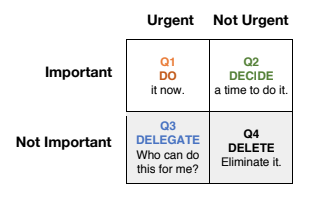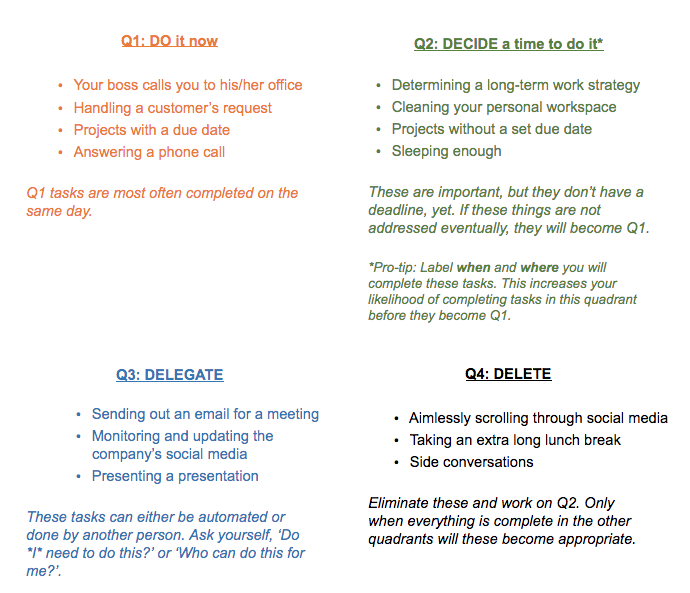The Eisenhower Matrix
“Give me six hours to cut down a tree and I will spend
the first four sharpening my ax.”
-Abraham Lincoln
Ever feel bogged down with a giant to-do list that never seems to fully get completed? That was me until I learned about this little trick. What if I told you that you could cut down that list by one quarter…or even one half and still accomplish each task in a timely manner? I’m sure if I didn’t have it before, I’ve got your attention now! Keep reading to find out exactly how to do just that with a little something called the Eisenhower Matrix.
Never heard of it? Here’s a little background. The Eisenhower Matrix is named after Dwight D. Eisenhower. He was an Army general and statesman who served as the 34th President of the United States from 1953 to 1961. During World War II, he was a five-star general in the United States Army, served as Supreme Commander, and prepared the strategy for an Allied invasion of Europe.
General Eisenhower continuously made tough decisions about which of the many tasks he should focus on each day. Thus, he invented the world-famous Eisenhower Matrix, which today helps us prioritize by urgency and importance.
I have started using this technique in my work life and my personal life and I will be the first to say that the difference in my productivity is night and day! I highly recommend trying it for a couple of days to see how your own productivity can skyrocket while your stress levels plummet!
Matrix Breakdown: Important vs. Urgent

Important: Things that move us closer to our defined goals, dreams, and aspirations in life. They have meaning, impact, and help us live in alignment with our values. (gym, family time, work strategies)
Urgent: Things that require immediate attention. (picking up a phone call, handling a customer’s request)
“What is important is seldom urgent and what is urgent is seldom important.”
-General Eisenhower
Examples

Implementation
Step 1: Review your day, think back to the tasks that take up the majority of your time.
You may be surprised to find that you spend very little time in Q2 (not urgent, but important).
Step 2: Start classifying and handling tasks based on their quadrant.
Q1 (urgent and important) and Q3 (urgent but not important) tasks can often become distracting. If classified properly, you should have very few Q1 (urgent and important) tasks. You may be surprised at how many Q3 (urgent but not important) tasks you can find.
Step 3: Carve out time for Q2 (not urgent, but important) tasks.
Remember, write ‘when’ and ‘where’ next to these items. When you find yourself in Q4 (not urgent, not important), this is when you should be doing Q2 (not urgent, but important) tasks
Summary
I will be honest, when I first learned about this, it sure sparked my attention but I procrastinated implementing it because it seemed like yet another thing I had to do that was taking me away from my current long list of things to do. However, if you’ll recall the first quote I shared with you by Abraham Lincoln, that time spent ‘sharpening your ax’ will pay off tenfold when it comes time to knock those items out. Before you know it, the Eisenhower Matrix will become second nature and you’ll begin wondering how you ever got anything done before it!
Author: Monica Casanova, TCS Account Manager